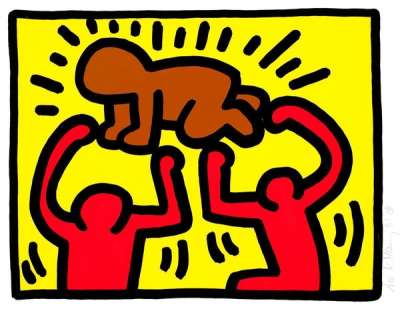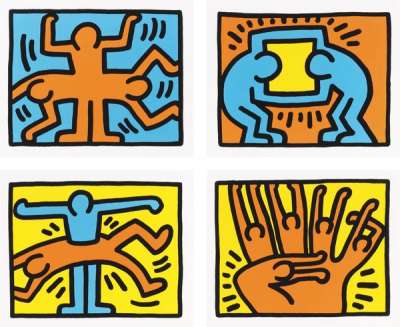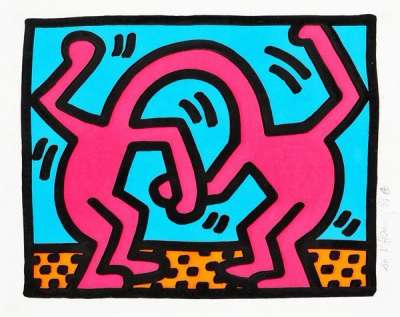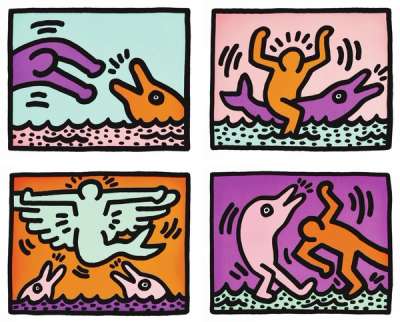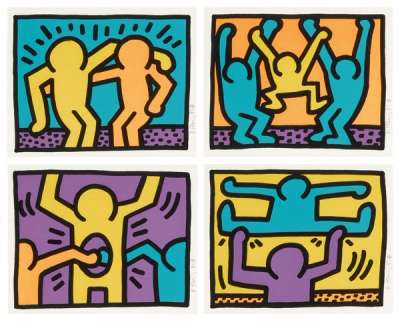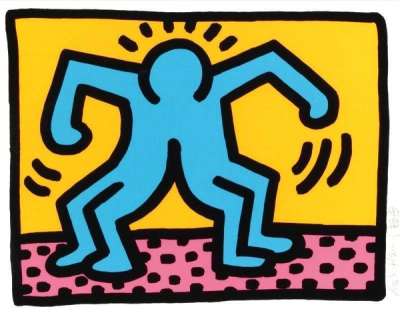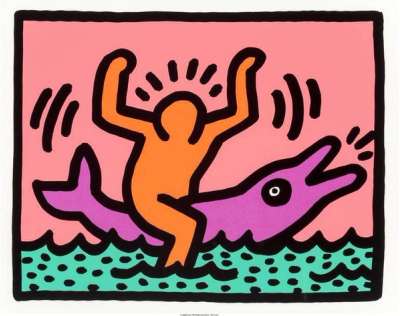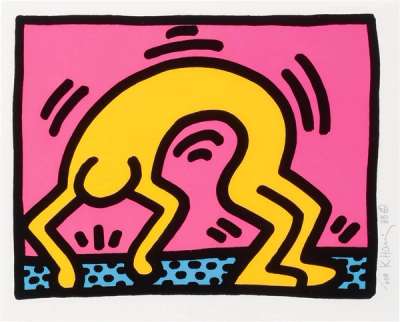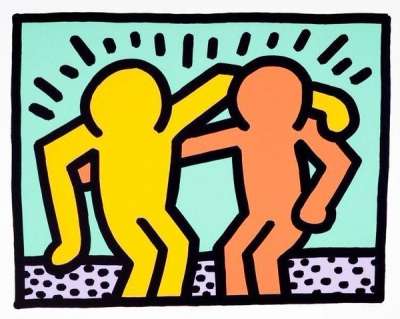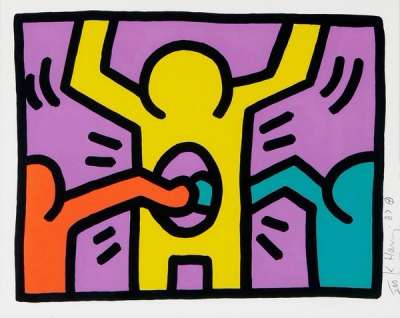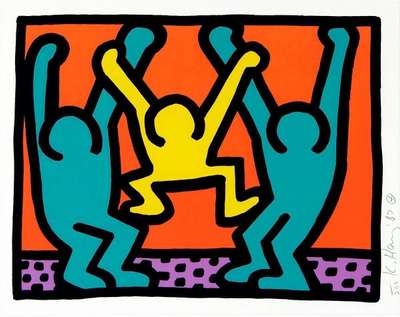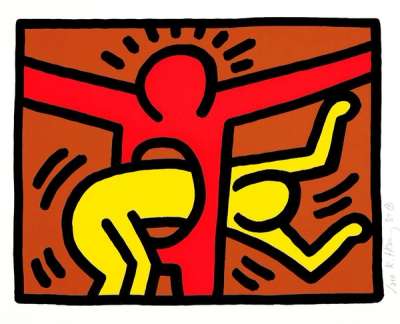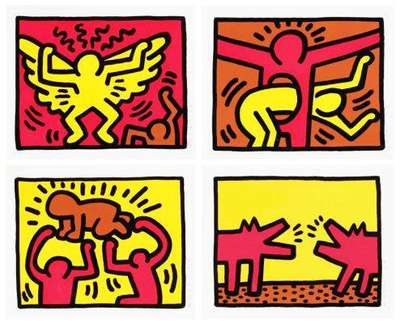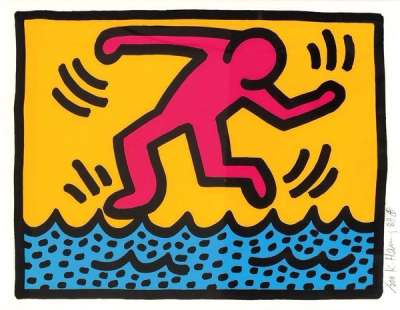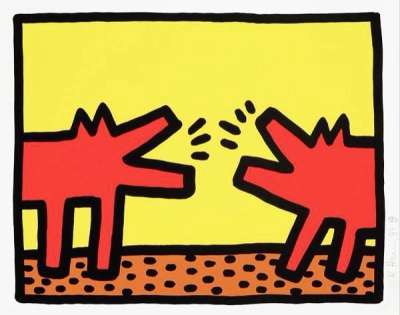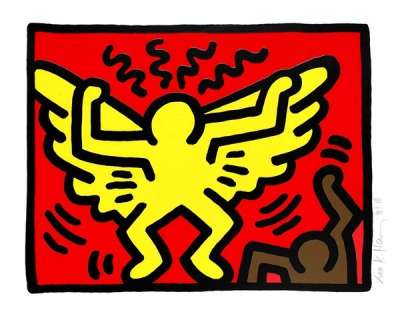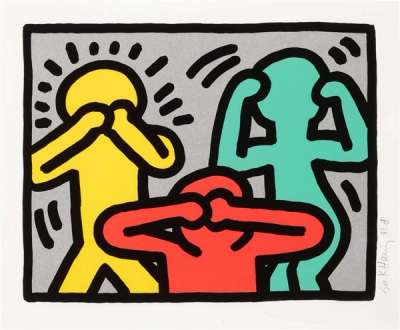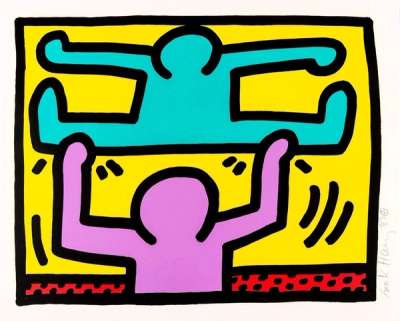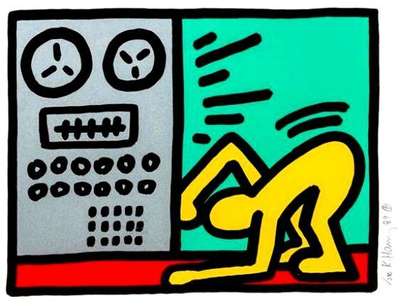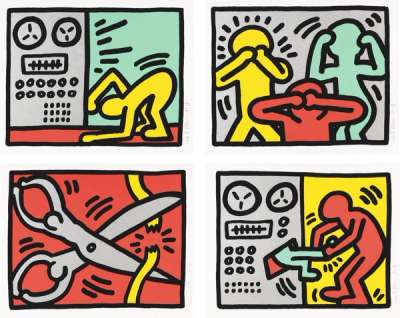
Pop Shop VI, Plate II

Pop Shop VI, Plate II
Unsigned Print
Keith Haring
£10,500-£16,000Value Indicator
$21,000-$30,000 Value Indicator
$19,000-$28,000 Value Indicator
¥100,000-¥140,000 Value Indicator
€12,500-€19,000 Value Indicator
$100,000-$150,000 Value Indicator
¥1,980,000-¥3,020,000 Value Indicator
$13,000-$20,000 Value Indicator
AAGR (5 years) This estimate blends recent public auction records with our own private sale data and network demand.
There aren't enough data points on this work for a comprehensive result. Please speak to a specialist by making an enquiry.
Medium: Screenprint
Edition size: 200
Year: 1989
Size: H 34cm x W 42cm
Signed: No
Format: Unsigned Print
TradingFloor
Track this artwork in realtime
Watch artwork, manage valuations, track your portfolio and return against your collection
Track auction value trend
Auction Results
| Auction Date | Auction House | Location | Hammer Price | Return to Seller | Buyer Paid |
|---|---|---|---|---|---|
| July 2020 | Phillips New York | United States | |||
| June 2018 | Phillips London | United Kingdom | |||
| June 2016 | AAG: Arts & Antiques Group | Netherlands | |||
| June 2014 | Germann Auctions | Switzerland | |||
| September 2013 | Phillips London | United Kingdom | |||
| May 2010 | Bonhams San Francisco | United States | |||
| June 2007 | Phillips New York | United States |
Meaning & Analysis
Pop Shop VI, Plate II is one of four prints in Keith Haring's sixth Pop Shop series. This print was released in a limited edition of 200 in 1989, and boldly encapsulates characteristics which are typical of Haring's oeuvre. Featuring conjoined figures emanating energy lines, this print provides a joyful sense of movement.
Made entirely of vibrant, primary contained in the thick black lines, Pop Shop VI, Plate II establishes why Haring became such a household name, adored by kids and collectors alike. This set was printed in the year before Haring died from AIDS and is closely tied to his Pop Shop project which saw him open up a store in downtown Manhattan selling his designs on t-shirts, badges and more for as little as 50 cents. The project was typical of Haring who believed art should be for everyone, not just an elite few, and it was this belief that brought him to the medium of print which allowed him to create large editions of his paintings and drawings in order to make them more accessible.
While the project was praised by friends such as Andy Warhol, who was fascinated by the possibilities of the work of art in the age of mechanical reproduction, it was snubbed by many leading art world figures who placed more value on original works of art. Speaking of the importance of opening the shop as opposed to making large canvases to please collectors, Haring said, “I could earn more money if I just painted a few things and jacked up the price. My shop is an extension of what I was doing in the subway stations, breaking down the barriers between high and low art”.
Printed in four colours – black, red, yellow and blue – this work shows Haring’s mastery of screen printing as a medium. Though he had experimented with print techniques such as lithography in the late 70s and 80s it wasn’t until 1983 that Haring began making screen prints, or serigraphs, which offered a way of creating multiple images, that artists had adopted from the world of commercial printing. This move to screen printing was undoubtedly due in part to the method being popularised by Warhol, one of Haring’s most important influences, and soon he was producing ever more inventive and daring work.
It soon became evident that the energy and curiosity he demonstrated for painting translated perfectly into printmaking and he began to work with publishers across the US, Switzerland, Japan, Germany, France, Denmark and Holland. The prints featuring singular images were released as portfolios of four, each from an edition of 200, while the Quad prints— compiling four images in a grid format— were released in an edition of 75. Totalling 875 prints featuring the orange-yellow-turquoise Pop Shop VI artworks and exemplifying the prolific productivity of Haring’s printmaking, each individual print nevertheless reflects the attentive care paid by Haring throughout the production process. Though initially the singular Pop Shop VI prints were released as four-part portfolios (and remain extremely valuable in their original sets of matching edition numbers) many portfolios have inevitably been divided.
By the time of his death, Haring had produced so many prints that the exact number has become impossible to count. There are many unsigned editions on the market, though these tend only to be considered valuable if approved by the Keith Haring Foundation. Today his prints are frequently among the most sought after multiples on the market.
